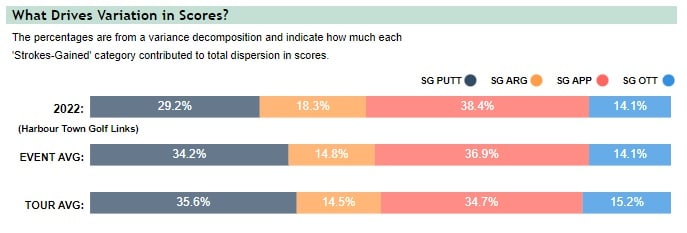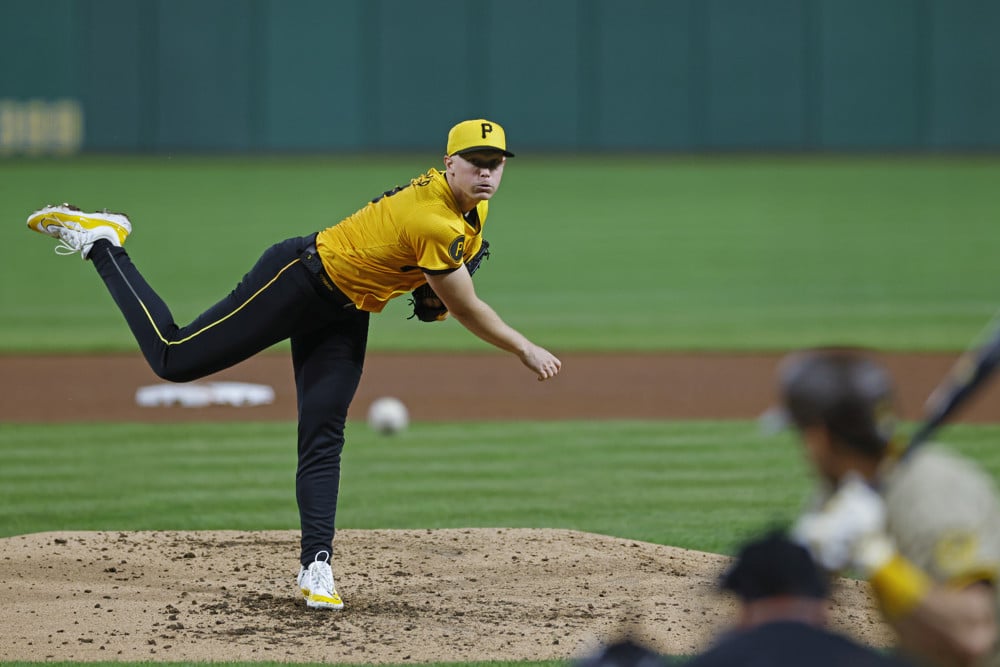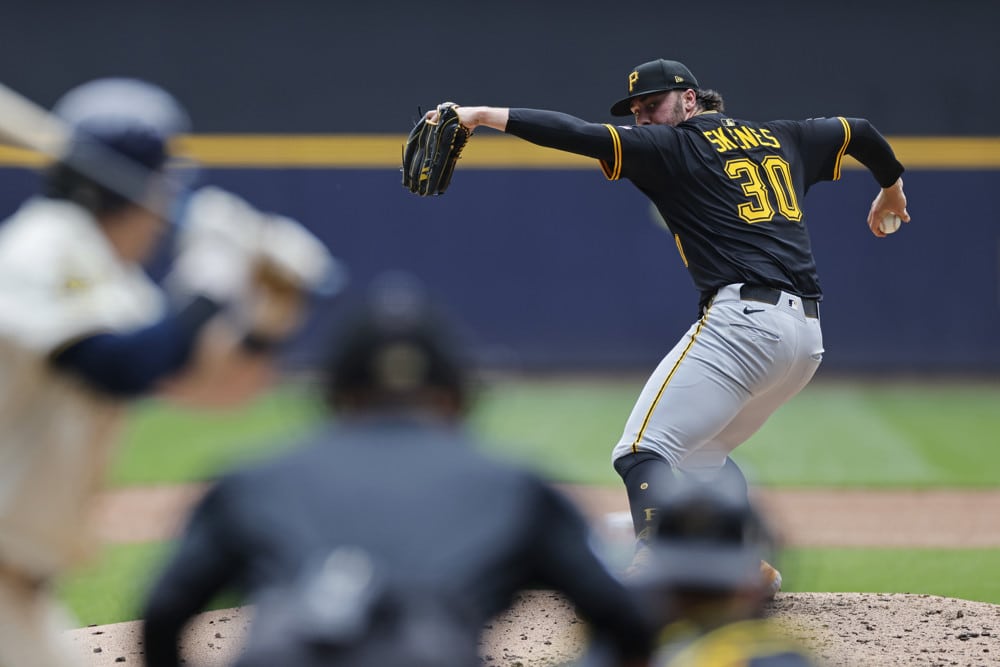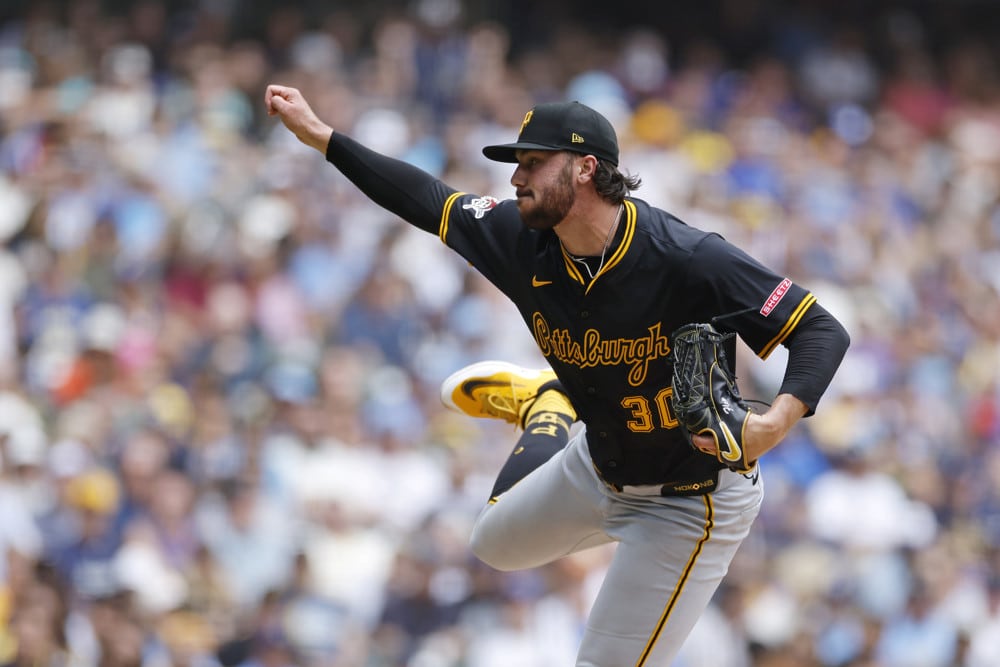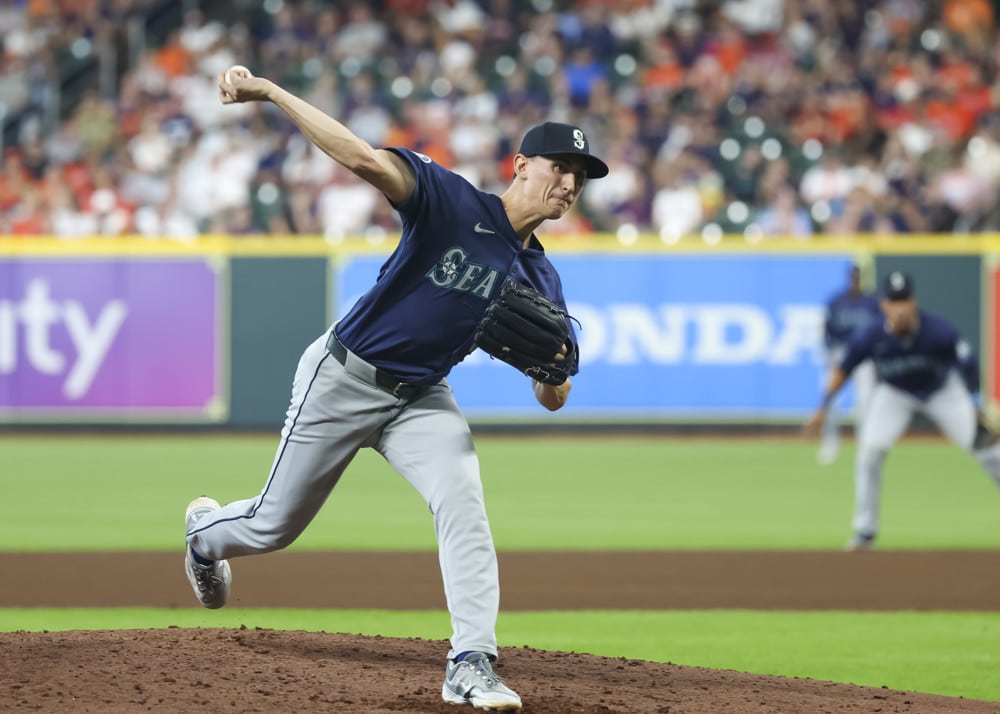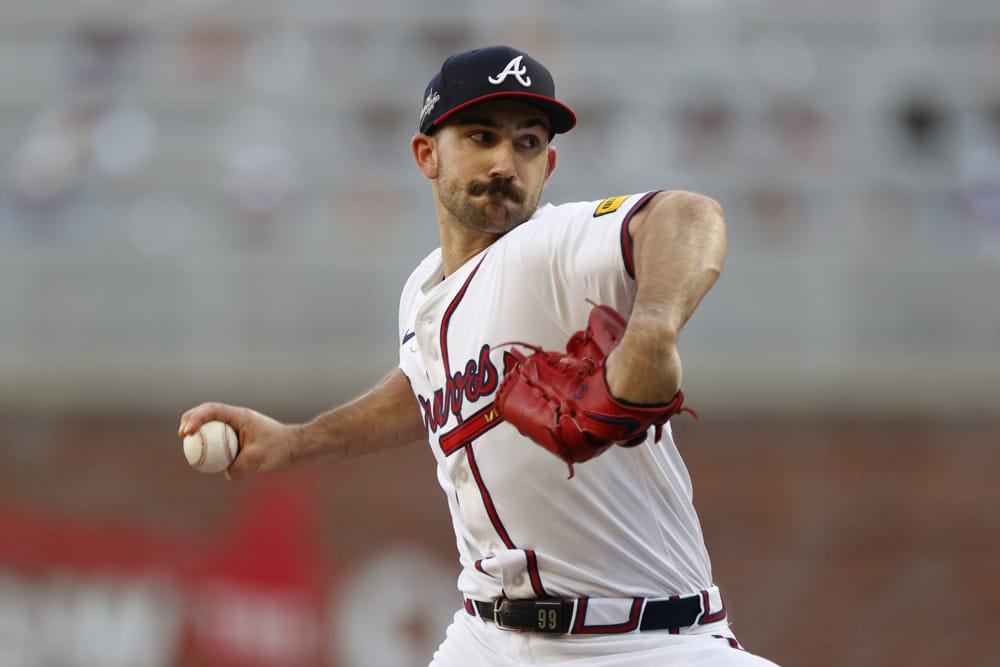
Following a satisfying conclusion to the Masters, the PGA Tour returns to a trip to Hilton Head for the 2023 RBC Heritage at Harbour Town Golf Links. As always, here is your early preview of the 2023 RBC Heritage and a preview of how to bet.
2023 RBC Heritage – The Golf Course
Harbour Town Golf Links is a public golf course designed by Pete Dye in 1967, with consultation from Jack Nicklaus. Over 38,000 rounds per year are played at Harbour Town. It’s one of the most popular public golf courses in America.
For an amateur, it is a wonderful golf course to play. Even from the back tees, the golf course is not overly long. The bunkers are also relatively shallow and very playable. However, the greens are very small. They average only about 3,700 square feet per green. Harbour Town has the second smallest greens on the PGA Tour and is well guarded by water hazards and bunkers, as expected from the diabolical Pete Dye.
There are also trees EVERYWHERE. It’s the perfect golf course for retirees who do nothing but hit every shot dead straight over and over and over. But for those who fight a nasty slice, this golf course is certainly not for you. Even the longest and highest of hitters won’t be able to cut corners over the oak and palmetto trees.
And over the years, it has given the PGA Tour pros some fits:
There are some good holes over the first 15 of the round; however, Harbour Town’s closing stretch makes it stand out. The golf course opens up to the inter-coastal and provides some excellent vistas of the bay and some fairly challenging golf for the players.
16th Hole – Par 4, 434 Yards

(Courtesy of GolfCourseGurus.com)
If you took anyone with just a smidge of knowledge about golf architecture and asked them who designed this hole, I bet they’d come up with the right answer. This is such a classic Pete Dye design. The hole is protected down the left side by a large, elongated fairway bunker, but it encourages the pro to play towards it so they have a shorter and better angle at most hole locations.
There’s also a tree right smack in the middle of the fairway, though it likely will not create a direct obstruction for players not named Cameron Young. But for those who play down the right side, not only will they have a longer approach, but on days where the pin location requires a draw, the tree provides quite the obstacle for that shot shape. Pete Dye is famous for these tiny little annoyances on a hole to fluster golfers. This is another example of one.
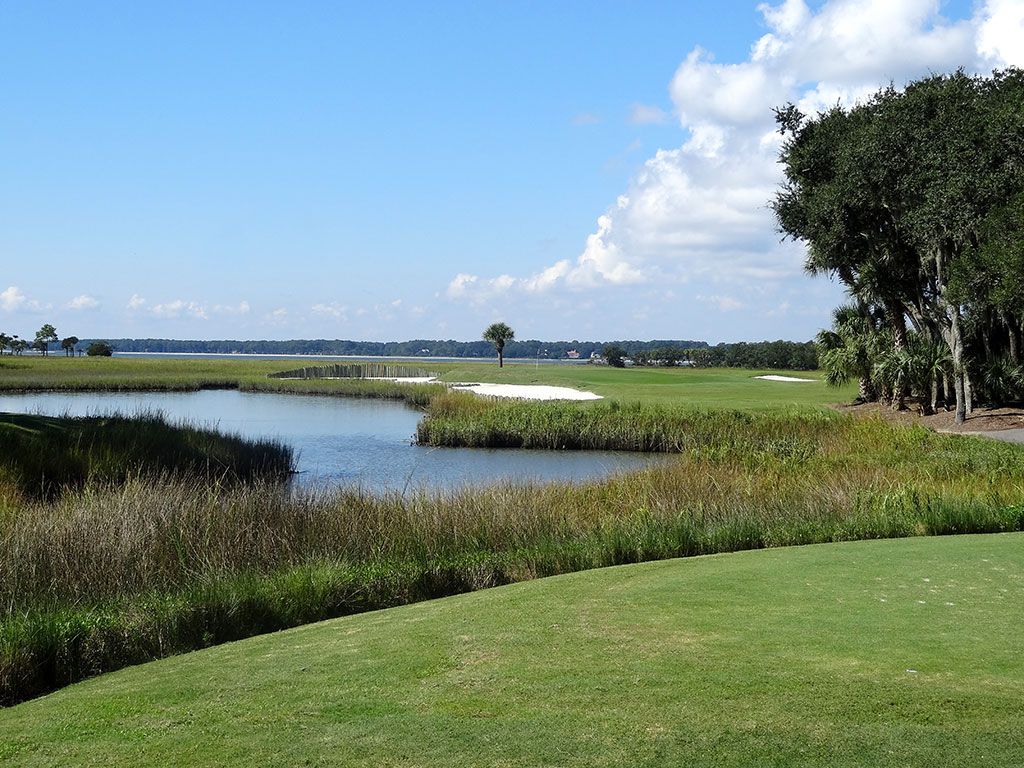
(Courtesy of GolfCourseGurus.com)
This one is played directly into the prevailing winds off the sound. It’s an intimidating tee shot on Sunday if the winds are up. Anything short of the green will either find the marshes short or the small strip of the bunker about four feet below the putting surface that they’ll have to blast up towards. In addition, a very narrow rectangular bunker to the right of the green can create impossible lies and stances to get the ball up and down for par.
18th Hole – Par 4, 472 Yards
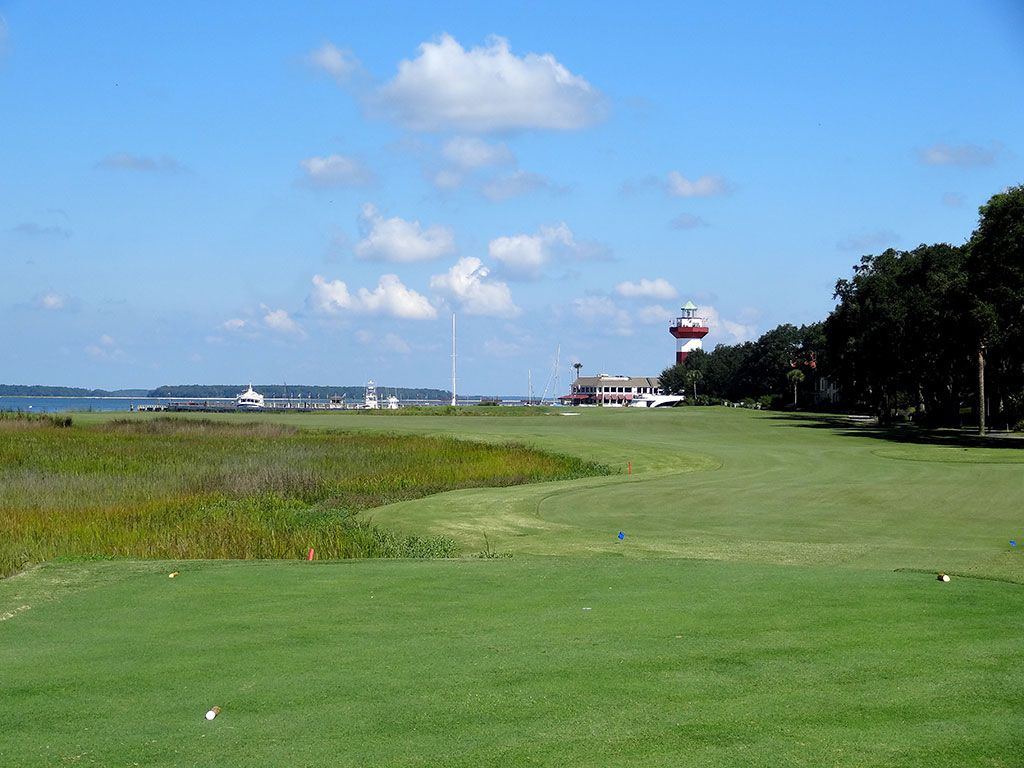
(Courtesy of GolfCourseGurus.com)
This is the signature hole on the golf course, as it plays towards the famous Hilton Head lighthouse in the distance and requires two forced carries over the marshes and the sound. Also, with the wind coming from the left, it will take a very errant hook from a right-handed golfer to hit in the water on both the tee shot and the approach. Still, with water all the way down the left and a large, elongated bunker short right of the green, it’s a very intimidating final hole.
Notable Golf YouTube Vlogger Mark Crossfield did a film series of Harbour Town in some very challenging wind conditions. Here’s a video of him taking on the final three holes of the golf course:
2023 RBC Heritage Preview – Betting Strategies
To begin a preview of what strategies to take when betting on the 2023 Valero Texas Open, here’s a full description of the Oaks Course at TPC San Antonio and a breakdown of how it tests all facets of the game:
General Course Information
Harbour Town Golf Links plays 7,191 on the scorecard. There are only three Par 5’s on the golf course. Since 2015, Harbour Town has played to an average score of -0.02. The annual scoring average is highly dependent on the weather conditions. In addition, the 2020 RBC Heritage was played in June, where the golf course was soft, it was all bermuda, and it was very easy. Therefore, gamblers should be careful not to put too much stock into the results of that tournament.
Here are more specific details about the types of holes at Harbour Town Golf Links:
Par 3’s:
Harbour Town Golf Links has four Par 3’s. Here are the yardages that they played in 2022:
- No. 4: 175, 178, 198, 185
- No. 7: 187, 204, 170, 199
- No. 14: 183, 190, 158, 198
- No. 17: 183, 176, 180, 169
Overall, the Par 3’s are typically one of the shortest on the PGA Tour. Since 2015, they have averaged only 183 yards long. Of all golf courses with at least five tournaments since 2015, only TPC Sawgrass, TPC Southwind, and Pebble Beach feature shorter Par 3’s.
Just because they’re short, however, doesn’t mean they’re not tough. Since 2015, the collective scoring average has been +0.13. Of all golf courses with less than five tournaments since 2015, they’re the 7th toughest on the PGA Tour. And in 2022, they were one of the five toughest collections of Par 3’s on the PGA Tour, including major venues.
Par 4’s:
Harbour Town has eleven Par 4’s. Here are the yardage ranges that they played in 2022:
- <375 Yards: 18.2%
- 375-425 Yards: 31.8%
- 425-475 Yards: 47.7%
- 475+ Yards: 2.3%
Overall, Harbour Town features a very short collection of Par 4’s. Only one out of 44 Par 4’s played over 475 yards in 2022 – a whopping 476 on the 8th hole in the 3rd round. No Par 4 plays over 475 yards at Harbour Town.
But unlike the short Par 3’s, the Par 4’s aren’t overly challenging. Since 2015, the Par 4’s have played to a scoring average of +0.04. That’s one of the easier scoring averages on the PGA Tour. And as players have gotten longer and longer with less-than-driver clubs, their difficulty has only decreased over the years.
Par 5’s:
There are only three Par 5’s at Harbour Town. Here are the yardages that they played at in 2022:
- No. 2: 541, 533, 550, 549
- No. 5: 561, 570, 543, 574
- No. 15: 575, 584, 588, 567
With a good drive, No. 2 and 5 are definitely reachable in two and pose for an excellent opportunity for birdie or eagle. Spieth eagled both holes in the final round of the 2022 RBC Heritage en route to a victory. These two holes are some of the easier Par 5’s on the PGA Tour.
But as for the 15th, that is very difficult to reach in two. Any tee shot that doesn’t find the fairway automatically makes it a three-shot hole. But even for those who do hit a great drive, it’s very risky to try and go for the green. Players face a blind approach shot over tall trees and have a water hazard directly left of the green. Most likely, only players with elite length will be able to go for the green in two. That means birdie isn’t as prevalent here as the other two holes.
Agronomy
Naturally, Harbour Town Golf Links is a TifEagle bermuda golf course. However, during the tournament, the greens are overseeded with poa trivialis, and the fairways and rough are overseeded with perennial ryegrass. However, a warm February and a few hot days in March and early April may have begun to bring some of the bermuda out of dormancy. This is similar to what happened at a few other overseeded golf courses lately. As such, treat this week like it’s bermuda.
One interesting development per the GCSAA Tournament Fact Sheet is the length of the rough. In 2023, the rough is 2.5″ long. Typically, the rough is between 3/4 and 1.375″ in length. Other tournaments this year, such as the Sony Open and the Valspar Championship, also grew up the rough in an attempt to protect the golf course. It looks like that’s the intention of the RBC Heritage this week.
Off The Tee
It’s very hard to gain strokes on the field off the tee on the PGA Tour. In fact, it yields the second-fewest strokes gained off-the-tee on the PGA Tour. With so many forced layups and the absolute necessity not to clatter tee shots around in the trees, everyone has the driver taken out of their hands. That’s why players don’t gain as many strokes on the field as they would at other driver-heavy golf courses.
Because otherwise, there isn’t much of a penalty for missing fairways at Harbour Town. It features the second-lowest penalty for tee shots that miss a fairway from those that hit, as well as the second-lowest penalty for shots that find the rough. That was likely due to the rough being so low in prior years. However, with the rough grown out a bit in 2023, expect that penalty to be a little higher this year.
So while in the stat categories, it appears as though Harbour Town is a very tough driving golf course, upon further inspection it isn’t. That’s why so many short and accurate players who don’t excel off the tee tend to do very well at Harbour Town Golf Links.
Overall, the average driving distance on all tee shots at Harbour Town since 2015 is only 274.6 yards. Only Pebble Beach features a shorter average driving distance. But unlike Pebble Beach, however, the driving accuracy rate is much lower at Harbour Town. Since 2015, players only hit the fairway 62.1% of the time. That’s one of the lower driving accuracy rates on the PGA Tour.
Approach
Like off-the-tee, players don’t gain as many strokes with their approach shots as they do at other PGA Tour stops. Of all golf courses with at least five tournaments played since 2015, Harbour Town ranks as the 8th toughest for approach shots on the PGA Tour. This is primarily driven from over 150 yards, where it ranks as the 6th toughest from that range.
Given the challenges Harbour Town offers, this isn’t a misleading statistic. First, the greens are very tiny at Harbour Town. They average only 3,700 sq. feet in area, which is some of the smallest on the PGA Tour. And when the wind plays a factor, it’s difficult to hit greens. That’s why the green in regulation rate since 2015 is only 59.6%. Of golf courses with at least five tournaments since 2015, that’s the fifth lowest rate on the PGA Tour.
Here are the ranges that players hit approach shots from at the 2022 RBC Heritage (per DataGolf):
Harbour Town is a firm test of short and middle irons. About 75% of all approach shots come from 100-200 yards. But specifically, which holes these come from is important to keep in mind. The Par 3’s make up almost the entirety of the shots from 175-200. Therefore, almost all approach shots on the Par 4’s will come from between 100-175 yards.
One approach this week is to separate both categories so you can see how players fare in each. Segregate the data for shots between 175-200 from the fairway only, as this will simulate the conditions on the Par 3’s. Then look at data from between 100-175 from both the fairway and rough (given the rough is longer this year) to simulate conditions on the Par 4’s. This will give very sufficient and accurate data points on how players fare on each.
Around The Green
Luckily for the players, Harbour Town historically hasn’t featured tremendously challenging conditions around the green. Players typically gain much more strokes around the green per shot at Harbour Town than at the typical PGA Tour stop. Of all golf courses with at least five tournaments since 2015, only the Stadium Course at PGA West yields a higher amount of strokes gained per shot around the green than Harbour Town does.
This probably has to do with both how small the greens are and how light the rough typically is. The ball would sit up pretty nicely in the short overseeded rough to allow players to clip the ball nicely. And players often can putt from the fairway instead of chipping back onto the playing surface. That’s probably why scrambling from both the fairway and the rough at Harbour Town is some of the easiest conditions to do so on the PGA Tour.
It will be interesting to see if this holds true in 2023 with some longer rough though. However, the golf course should be pretty soft with all the rain the area has seen lately. Not only should the greens be very receptive to approach shots, but players should also be able to generate a lot of spin to nestle balls close to the hole on their chip shots.
Putting
Players typically gain about the same amount of strokes putting at Harbour Town that they do at the typical PGA Tour setup. While of all golf courses with five tournaments since 2015, it ranks as the 10th toughest, it’s much closer to the PGA Tour average than very difficult places like the California poa tracks or Augusta National.
While the greens at Harbour Town are small, they do have some subtle undulations to it that can give the players fits. And when the golf course is firm, they can run pretty quickly. But overall, the greens are set up to run about 11.5 on the stimpmeter, which is slower than average for PGA Tour standards. And given how much rain the area has received recently, they won’t have as much fire in them as other years might have seen.
Other Information
There is a very strong trend for who has won the RBC Heritage recently. Excluding the 2020 COVID, seven of the last 9 winners of the RBC Heritage played in the Masters in the prior week. Here are those winners, along with their finish at the Masters in the prior week:
- 2022: Jordan Spieth (CUT)
- 2021: Stewart Cink (T12)
- 2018: Satoshi Kodaira (T28)
- 2016: Branden Grace (CUT)
- 2015: Jim Furyk (CUT)
- 2014: Matt Kuchar (T5)
- 2013: Graeme McDowell (CUT)
Success at the Masters isn’t a pre-requisite to winning the RBC Heritage the following week. Four out of these seven winners missed the cut, while only Matt Kuchar was able to follow up a Top 10 finish with a win at Harbour Town.
While it’s never a good idea to go all in on a gambling trend, this one is something to keep in mind this week.
Lastly, let’s take a look at both the skillset chart and how that has translated to the variation in strokes gained at Harbour Town (per DataGolf):
In terms of the profile of a player, there’s a higher correlation between players who are accurate off the tee and strong around the green to success at Harbour Town than there is to the typical PGA Tour venue. The correlation in strength with irons is about the same as a normal event. And there is a very low correlation between success at Harbour Town and how well one is with the putter, as well as how far one hits it off the tee.
And that does help to then explain how total strokes gained are derived at Harbour Town every single year. Approach play and around the green performance have a higher weight in determining the variation in strokes gained between players than putting and off-the-tee do. Accuracy is typically not a strong driver of Strokes Gained Off-the-Tee metrics, and players don’t hit drivers a lot at Harbour Town. As such, this can turn into a contest of who can ball strike and scramble the best.
One thing to keep in mind, however, is that in tournament, performance with accuracy off the tee is not very correlated with total strokes gained in the tournament. Since 2015, only the 2019 RBC Heritage saw driving accuracy as a higher influence on total strokes gained than a typical PGA Tour stop. Otherwise, within the tournament, it’s not predictive. Here is the driving accuracy ranks in tournament of the top contenders at last year’s RBC Heritage (per DataGolf):
This is a bat$hit dispersion. Of the top contenders, it features the player who led the field in driving accuracy as well as the player who finished third from last. And noted bomber/sprayer Cameron Young somehow finished 11th in driving accuracy on the week!
This yields conclusions and further questions. First, it appears that Harbour Town is a golf course that elevates the profile of a player who is accurate off the tee because they’re not behind the eight ball like at some other places. But just hitting more fairways than others is not a significant edge at this golf course alone. It’s the accurate players who also possess great skills with the irons and around the green that are the ones to actually target.
Second, is it possible that the stereotypical short, accurate player like Matt Kuchar, Brandt Snedeker, Jim Furyk, and Kevin Kisner that gamblers have targeted over the years isn’t really what should be targeted anymore? Look at some of the names on this list. Only Matthew NeSmith and Matt Kuchar ranked inside the Top 50 in driving accuracy on the PGA Tour last year. And eight players above ranked outside the Top 100.
Therefore, don’t weigh driving accuracy rates too heavily in your models this week. There’s not only evidence to suggest that it’s becoming less predictive of success at Harbour Town, but it’s almost completely unpredictive to success within the tournament. Other factors like strong short and mid-iron play and around the green performance seem to be much more important than just hitting fairways alone.






